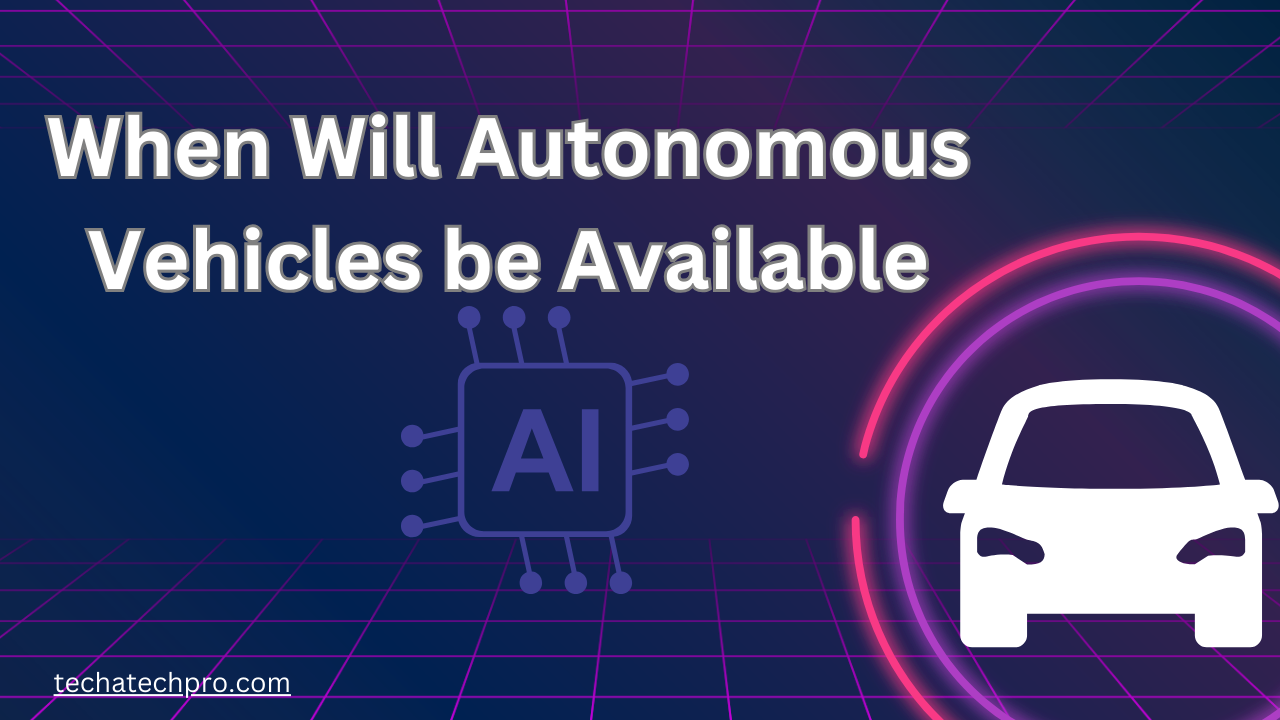
Navigating Toward the Future: The Road to Autonomous Vehicle Availability
Autonomous vehicles have evolved from being a concept in science fiction to becoming a tangible reality in recent years. Nevertheless, the topic of fully autonomous vehicles that can function without human intervention continues to generate significant interest and speculation due to their widespread Autonomous Vehicles be Available . Let us examine the present condition, obstacles, advancements, and forthcoming forecasts pertaining to autonomous vehicles.
Present Status of Autonomous Vehicles.
Autonomous vehicles function at various levels of autonomy, spanning from Level 1 (driver assistance) to Level 5 (fully autonomous). Leading companies such as Tesla, Waymo, and General Motors are at the forefront of advancing autonomous technologies, each pushing the limits of what is achievable.
Challenges and Roadblocks
There are several obstacles that hinder the quick implementation of self-driving automobiles. From a technological standpoint, the major difficulty lies in guaranteeing safety and dependability under all circumstances. Regulatory frameworks must be updated to meet liability, insurance, and operational rules. Furthermore, the importance of public acceptance and confidence in this emerging technology cannot be overstated.
Advancements and breakthroughs

Notwithstanding the obstacles, substantial advancements have been made. Advancements in artificial intelligence, sensor technology, and processing power have expedited the progress. Conducting pilot projects and rigorous testing on public roadways is yielding significant data and insights
Forecasts for the Future
According to experts, it is anticipated that fully autonomous vehicles may become accessible within the next ten years. Nevertheless, the success of this timeline depends on the resolution of crucial matters such as safety, regulation, and infrastructure preparedness. The rate of implementation will differ depending on the geographical area and sector.
The influence of autonomous vehicles
Autonomous vehicles offer a multitude of advantages, such as enhanced road safety, decreased traffic congestion, and heightened mobility for the elderly and disabled. However, worries regarding cybersecurity, job displacement, and ethical dilemmas continue to exist.
Regulatory framework
Governments globally are struggling to effectively regulate this nascent technology. It is imperative to establish comprehensive safety standards and protocols for autonomous vehicles in order to earn public confidence and guarantee responsible implementation.
Assessment of Infrastructure Preparedness
Smart cities with sophisticated infrastructure, including intelligent traffic signals and 5G networks, are crucial for facilitating the functioning of autonomous vehicles. Investments in infrastructure are essential for achieving smooth integration.
Consumer Viewpoints

Public perception will play a crucial role in determining the level of acceptance of autonomous vehicles. Establishing trust through educational initiatives and open communication regarding the advantages and potential drawbacks is crucial. Consumer demand will ultimately determine market adoption.
Global Developments Different countries have diverse approaches to regulations and investments concerning autonomous vehicles. Global cooperation and information exchange will be critical in creating a unified worldwide structure.
The automotive industry is currently experiencing a significant and fundamental change. Conventional automobile manufacturers are transforming themselves into providers of mobility services, providing self-driving transportation solutions that can be accessed whenever needed.
Conclusion
despite the appeal of completely self-driving vehicles, the general public needs to address several obstacles before widespread acceptance and use. Technological progress, clear regulations, public approval, and infrastructure expansion are all essential components of the overall picture. Through the collaborative endeavors of industry stakeholders and policymakers, autonomous vehicles have the potential to profoundly transform transportation in the near future.





